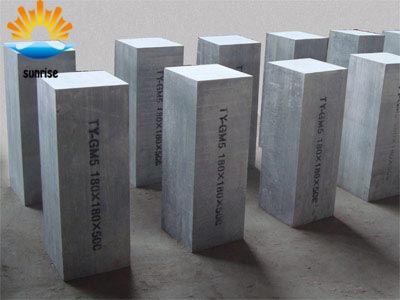Product Search
Quickly find the product you need
Products List
Refractory Knowledge
- Refractory material production process
- Manufacturing process of fire clay insula
- The Use of Mullite Insulation Bricks
- Aggregates Used For the Production of Ins
- Pollution and treatment in the production
- Classification of mullite insulation bric
- Production Process Methods of Refractory
- Pros and cons of lightweight mullite bric
- Thermal Shock Resistant Fireproof Heat In
- the development of the refractory brick i
Products List
- Phone:0086-370-63838939
- Email:sales@sunriserefr.com
- Office Address: No.36 Fengchan Road Of Zhengzhou, Henan, China (Mainland)
High Temperature Compressive Strength of Refractory
Date:2019-09-18 16:19 | From:Zhengzhou Sunrise Refractory | Author:admin
With the increasing awareness of environmental protection, refractory materials have gradually entered the field of vision and become an essential product in the high-temperature furnace industry, which is welcomed by people in the high-temperature furnace industry.
Today, we approached the refractory material and thoroughly analyzed the high temperature compressive strength of the refractory. The change in the high temperature compressive strength of the refractory product is controlled by some of the components of the material, particularly the changes in the matrix or its associated phase at elevated temperatures.
Generally speaking, a sintered refractory material composed entirely of crystals is susceptible to plastic deformation due to high crystal grains and grain boundaries at high temperatures, especially when the loading speed is small, and plastic deformation is more likely to occur, so that the strength increases with temperature. reduce. When a part of the crystal phase or each crystal phase is melted at a high temperature or a melt is formed, the strength thereof tends to drastically decrease.

In addition to crystals, the refractory material also contains a certain amount of glass phase, such as silica brick, clay brick and high alumina brick. The matrix is mainly composed of glass phase. As the temperature increases, the strength of the multiphase material also increases. As the structure decreases with temperature. However, when the temperature is further increased, since the viscosity of the glass phase changes from brittleness to toughness, the bonding between the particles of the material is made stronger, so that the strength is remarkably improved.
According to the above analysis, Sunrise Refractories concluded that as the temperature continues to rise, the melt viscosity in the product decreases sharply, and the strength decreases as the melt viscosity drops sharply. When the refractory contains a certain amount of binder that varies with temperature, the strength of the article must fluctuate with increasing temperature.

